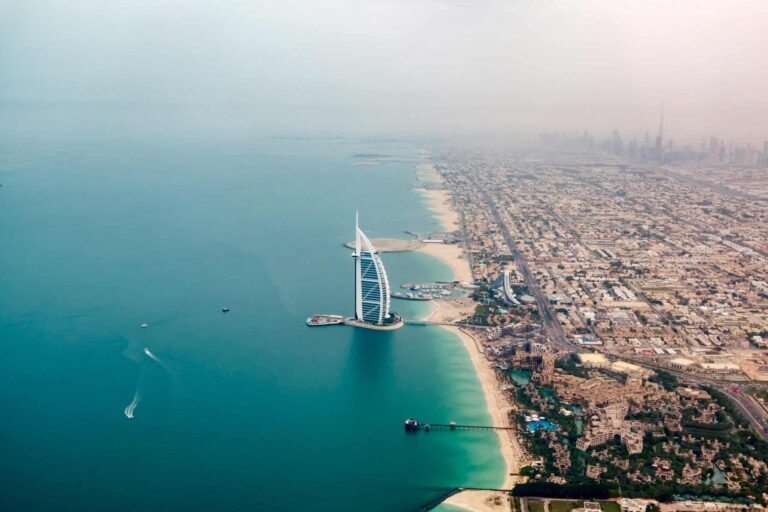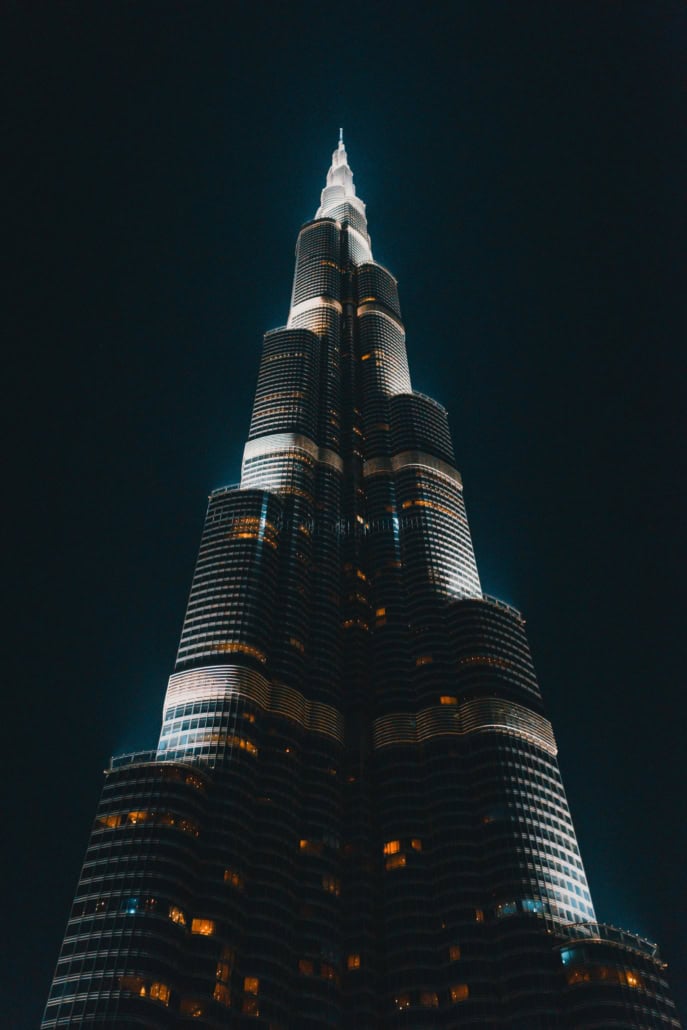When people ask, “What is Dubai known for?”, the answer is multi-layered. This rapidly evolving city in the United Arab Emirates blends futuristic ambition with historic roots. Below you’ll find a comprehensive breakdown of the key facets that define Dubai’s global identity—along with data, insights and practical take-aways.
1. Iconic Architecture & Landmark Projects
One of the first things people think of when they hear “Dubai” is bold, record-setting architecture.
Highlights
-
The Burj Khalifa towers at 828 m and is the world’s tallest building. Wikipedia+2Wikipedia+2
-
The man-made island shaped like a palm tree, Palm Jumeirah, is a striking example of Dubai’s large-scale land-reclamation and urban design experimentation. Wikipedia+2Encyclopedia Britannica+2
-
Dubai has diversified far beyond oil: trade, tourism, aviation and real estate are major pillars. Encyclopedia Britannica+1
Why It Matters
These architectural statements serve multiple purposes:
-
They attract international tourism and global media attention.
-
They signal ambition and investment-readiness to global business.
-
They create a distinctive “brand” of Dubai as futuristic, spectacular, and high-end.
Tip for Visitors & Brands
If you’re in Dubai (for travel or business), consider timing your visit to a landmark at sunrise or sunset for dramatic photos. For brands, associations with “record-breaking” and “innovative construction” resonate when describing Dubai-based projects.
2. Luxury Shopping & Retail
Shopping in Dubai is not just shopping—it’s an experience.
Key Facts
-
The Dubai Mall is among the largest malls in the world, housing over 1,200 stores. Wikipedia
-
Dubai has earned the nickname “shopping capital of the Middle East”. Wikipedia+1
-
With such massive retail volume and tourist footfall, shopping is a major draw for visitors.
What this Means
Luxury brands, flagship stores, and experiential retail (ice rinks, aquariums, VR) are common. For visitors, the shopping ecosystem often blends high-end luxury + traditional markets (souks) + family-friendly amenities.
Tip
If you’re visiting, allocate time not just for shopping but for the broader “mall-experience” (dining, entertainment, architecture). For retailers or marketers, positioning in Dubai means being part of a high-visibility ecosystem catering to affluent and international audiences.
3. Tourism Powerhouse & Global Connectivity
Dubai is not just known for what’s built—it’s known for how many people it attracts and how well connected it is.
Visitor Statistics
This data underscores Dubai’s growth as a global destination.
Broader Impacts
-
Tourism helps diversify Dubai’s economy away from oil. Encyclopedia Britannica
-
Infrastructure (airports, hotels) is expanding to accommodate growth.
-
Dubai’s brand is as much “destination” as “city”.
Tip
For travel writing, positioning: “Dubai – where world-citizens converge in one city” works well. For business, note the large international catchment and infrastructure capacity.
4. Cultural Diversity & Fusion of Old & New
While many know Dubai for its glitzy side, it also has roots in trade, pearling and desert life—and a highly multicultural resident base.
Snapshot
-
Originally a fishing & pearling village, Dubai transformed very rapidly. 365adventures.me+1
-
The city hosts people from 200+ nationalities; the cultural fabric is diverse. GetYourGuide+1
-
Traditional markets (like the Gold Souk or Spice Souk) and neighborhoods (like Bur Dubai) give visitors a sense of heritage and continuity amid the skyscrapers.
Why This Is Valuable
The mix of heritage + global cosmopolitan life makes Dubai appealing not just for luxury but for “experience” travellers and for international professionals seeking a multicultural environment.
Tip
When writing or planning marketing around Dubai: highlight both the ultra-modern and the traditional-rooted. The interplay is part of the allure.
5. Hospitality, Experiences & Desert Adventure
Dubai is as much about “doing” as “seeing”—from luxury stays to desert safaris.
Highlights
-
Hotels & resorts in Dubai are globally recognised for luxury services.
-
Desert safaris, dune-bashing, camel rides, and 4×4 adventures connect visitors with the Arabian desert environment.
-
Theme parks, indoor ski slopes, aquariums and immersive experiences add breadth.
-
More than 300 days of sunshine a year. Visit Dubai
Insight
This dimension ensures that Dubai isn’t just a city-stop, but a full-scale tourism ecosystem—from family Holidays to high-end escapism.
Tip
If producing content, consider segmentation: families (theme parks + resorts) vs luxury couples (spa + fine dining) vs adventure travellers (desert + water sports). Tailor call-to-action accordingly.
6. Business, Trade & Strategic Hub
Beyond tourism, Dubai is widely known as a hub for business, trade and finance.
Key Facts
-
Dubai operates major ports and an active logistics/cargo sector. Encyclopedia Britannica
-
The economy has been deliberately diversified to reduce dependence on oil. Wikipedia
-
Real-estate, aviation, finance and events (e.g., expos) all factor into Dubai’s global role.
Implication
For businesses and investors, “Dubai” signals access to MEA markets, global connectivity, infrastructure, and a cosmopolitan workforce.
Tip
When writing for a business audience, emphasise Dubai’s dual role: luxury lifestyle hub and strategic business node.
7. Key Data At A Glance
Here’s a mini-table summarising some of the most pertinent statistics for quick reference:
| Metric | Approximate Figure | Year / Source |
|---|---|---|
| International visitors | ~18.72 million | 2024 Global Media Insight+1 |
| Days of sunshine | 300+ days per year | Visit Dubai |
| Tallest building height | 828 m | Burj Khalifa Wikipedia+1 |
| Percentage of economy not oil-based | Oil contributes <1% of GDP (as of recent) | Wikipedia+1 |
8. Why Dubai “Works” as a Brand City
From an AEO/SEO/geo perspective, here are some reasons Dubai stands out and how content about Dubai can be optimized:
-
Authority & uniqueness: Dubai has “firsts” and “records” (e.g., tallest building) which give strong hook-lines.
-
Geographic relevance: It sits at a natural crossroads between Asia, Europe and Africa—good for geo-targeting content.
-
Search volume / interest: Because of its tourism and business status, people consistently search for “Dubai attractions”, “Dubai business hub”, “Dubai luxury hotels”.
-
Rich content opportunities: From architecture, shopping, culture, desert adventure to business/trade – there’s a wide spectrum of sub-topics to cover.
-
Visual potential: Dramatic images (skyscrapers, desert, malls) increase engagement and boost dwell time—important for SEO.
If you’re crafting a blog post or web page about Dubai, make sure you:
-
Use geographical keywords (“Dubai”, “Dubai UAE”, “city of Dubai”)
-
Incorporate visuals (skyline, landmarks, experiences)
-
Provide data & unique insights (visitor numbers, economic statistics)
-
Offer useful tips for different audiences (tourists, business travellers, investors)
-
Maintain clear headings, use tables/infographics and keep paragraphs short for readability.
9. Quick Visitor Tips (Actionable)
-
Best time to visit: November to March (milder temperatures)
-
To experience traditional culture: visit historic districts (Al Fahidi, Deira) and souks.
-
To feel the modern edge: go up to the Burj Khalifa observation deck & stroll around Dubai Mall.
-
For desert adventure: book a safari in late afternoon when the light is best for photos.
-
Shopping smart: Visit Dubai Mall or Mall of the Emirates for luxury; for local experience visit Gold Souk or Spice Souk.
-
Stay aware of cultural norms: Dubai is cosmopolitan, but local laws and customs still apply (e.g., dress code, behaviour in public).
10. Conclusion
In summary: Dubai is known for a unique blend of spectacular architecture, luxury shopping, global tourism, multicultural vibrancy, desert-meets-metropolis experiences, and a forward-looking business environment. Whether you’re visiting for leisure, relocating for work, or exploring business opportunities, Dubai offers both substance and spectacle.





